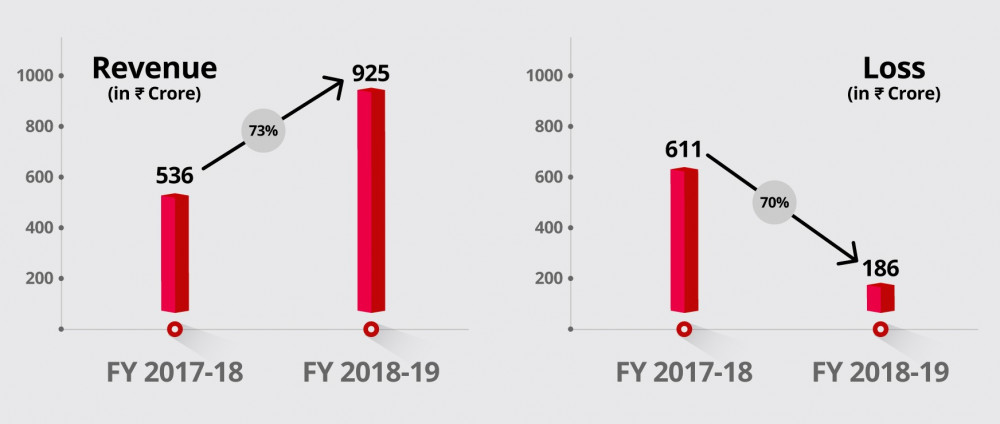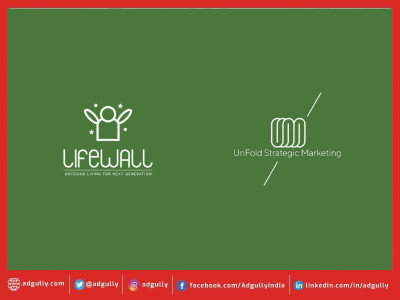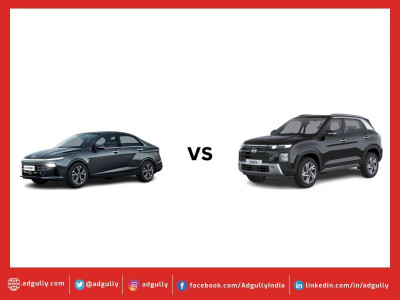Two Years of Snapdeal 2.0
In a LinkedIn post published by Mr.Kunal Bahl, CEO and Co-Founder of Snapdeal, he marks their two year anniversary, growth, achievements and also what's next for Snapdeal.
Mr. Bahl talks about the following topics in his post:
July 2019 marks two years of Snapdeal 2.0 – our focused strategy to pursue growth in terms of real revenue with good economics and enhanced customer experience.
Two years ago, we were coming off a challenging patch for our company. However, disciplined and focused execution by our team over these past two years shines through in our audited financial results, which we have released today.
In the recently concluded financial year, FY 2018-19, Snapdeal grew its consolidated revenues by 73% YoY, while simultaneously reducing loss by 70% YoY. Revenue from Operations for Snapdeal (standalone) grew by 87% YoY.
Not only this, our transacting customers grew 2.2X and traffic surged 2.3X to 70 million unique users/month. And all this in a year when the e-commerce companies in India burnt through ~USD 2.5 billion in the pursuit of growth.
This makes us the proud exception in Indian e-commerce, where greater growth usually means greater losses. We were also the first large scale e-commerce company in India to achieve the cash-profit milestone in the year (month of June 2018).
Over the last two years, we have reduced our loss by an incredible 96% while growing on parameters which matter to every business – more customers and more revenue.
So, how did we achieve this?
As I wrote in my blog in October 2018, our strategy is to focus on the needs of the value-conscious buyers in India – they constitute the bulk of our users. They are also the fastest-growing mega segment in Indian e-commerce and will be nearly 400 million strong over the next few years.
The bulk of online sales today are mobiles, electronics and branded fashion - driven by deep discounts. As more Indians come online thanks to the 4G revolution, the industry is now also growing rapidly in the middle and lower end of the market. With relatively modest disposable incomes, value is a very important consideration for this new cohort of buyers. Given their vast numbers, the supply of value-priced selection is growing online exponentially – mirroring the selection found in the bazaars of India. This is a market worth nearly USD 163 billion and only about 1-2% of this is online, compared to the 10-40% online penetration for branded products like mobiles, electronics, etc.
The first 100 million online buyers have been largely homogenous - fluent in English, relatively high-income, mostly metro buyers, voracious Internet users with high brand awareness and having the disposable income to make discretionary purchases when tempted by discounts on branded products.
The next 400 million online buyers are far more diverse in terms of their aspirations, where they live, the media they consume, languages spoken, frequency of online purchases and levels of disposable incomes. Serving them requires a different kind of philosophy, which is built around their needs and not only around the world built by brands.
Our efforts of the last two years can be categorised in the following buckets:
- Getting closer to our customers
- Deeper collaboration with our seller partners
- Aligning technology platform with our objectives
- Putting the fun back in shopping
- Staying lean and moving fast
- Building a culture of belief
Getting closer to our customers
We now spend a lot of time with our customers understanding their world and how we may serve them better. Every day we have customers whom we invite to our office and our team members can sign up to spend an hour with them and talk about a wide range of topics with them. These conversations have been some of the most insightful and profound experiences.
For instance, earlier this year, I met Dr. Nath - a social worker and a passionate patriot with incredible zeal to engage with the external world. She shops frequently on Snapdeal and spoke at length about the regional products, including handicrafts and natural remedies that she finds on Snapdeal and how we can expand this selection to benefit larger parts of our society. The lives, experiences and perspectives of each customer are so interesting, and they have so much positivity when they share ways in which we can improve our platform - it is really heart warming.
Deeper collaboration with our seller partners
Snapdeal’s selection has grown to over 200 million listings on the platform. In the last two years, we have seen 60,000+ new seller partners come on board adding over 50 Million new listings. This is the result of a structured well-planned, deep engagement with our seller partners in order to build an assortment of products that is relevant for our buyer.
Some of our best sellers mirror the needs of our buyers - USB air coolers, 14-in-1 choppers, compact shoe racks, mobile phone stand with a magnifier for the bigger screen experience etc. Expanding this selection in a conscious and deliberate way has been an important part of our strategy.
We use Machine Learning and AI to identify emerging trends & gaps in the product-pricing mix and guide our sellers to benefit from these opportunities. While some other marketplaces use these interventions to promote their private labels or favourably position their proxy sellers, Snapdeal remains unequivocal about being a pure marketplace. The benefit of this is the trust we have won from sellers, who value us as a neutral platform.
Amidst many seller success stories, one that stands out for me is that of Aman Saudagar, who came to Delhi as a 14-year-old, with Rs 17 in his pocket. After his initial struggles, he was guided to the online world and in a matter of 4 years, he has built a successful online business worth nearly Rs 2 Crores. Such examples are a constant reiteration of the crucial role genuine marketplaces can play in boosting small businesses and creating jobs in India.
A very happy thought for all of us at Snapdeal is the realisation that the doubling of our orders in the last one year is actually a two-fold increase in the business of the seller partners on our platform, majority of whom are small businesses. This is not a growth that has been captured by proxy/related party sellers as is the case in some other e-commerce companies. Each and every order is fulfilled on Snapdeal is by independent, third-party seller partners.
Aligned technology with our objectives
We have re-tooled our technology and processes to build a frugal, efficient and no-frills operation, which keeps costs low and allows us to scale up without the need to subsidise parts of the value chain.
An increasingly large part of our selection is the value-centric, unbranded selection that is sold in the bazaars across India. How did we make this unstructured selection easy to buy and sell online? We use AI to optimise catalog and search enhancements. Basis this, we offer an endless, personalised feed of products relevant to a buyer and not just the brands, bestsellers and deals of the day.
We have also created a huge library of short-format videos to help users get an enhanced idea about the functionality of a product, which is quite important given that a significant number of products that we sell may not be from a recognisable brand or a product a consumer has ever seen before.
We have invested time & resources to build the tech capabilities required to better serve the needs of our customers. For instance, a machine learning-based smart courier allocation system analyses in real-time the first-mile decision (pick-up) with a last-mile decision (delivery) identifying the partner(s) who can deliver the shipment in the most efficient manner. Given that most of our orders are shipped directly by our seller partners, this is an important tech achievement for us.
On the delivery side, many of our customers expect us to deliver to addresses typical of smaller towns. “Green Double Story Building near Main Bus Depot, Bijnor 246701 Uttar Pradesh” with the customer’s name & phone number. We have the capability to process and deliver to such addresses. We are committed to adapting our capabilities to our buyers’ & sellers’ needs wherever we can.
Putting the fun back in shopping
At Snapdeal we believe that shopping need not be a chore to be completed in the least possible time. About 80% of our business comes from small towns and cities, where time is not at such a relative premium. Users like to spend time to browse the selection, find joy in the hunt for new and interesting products and also discover attractive bargains in the process.
Keeping in mind our product mix and buyer preferences, we have made the discovery process engaging, fun and rewarding. We enhance user engagement through a variety of fun activities like spin the wheel, scratch cards and lucky coins, often with no requirement to buy a product to participate. This has helped drive our business objectives of greater traffic, engagement and conversions. Very large number of our customers constantly write in to us, telling us how much they love coming and shopping on Snapdeal because of these fun and games!
To help buyers make better-informed decisions, we present social proofs and nudges to share if the product has been well received in the city, in a comparable cohort etc. In the initial few transactions, new buyers find comfort and validation in knowing that others are also making the same choices.
Many of our ideas come from our customers and we are always happy to receive suggestions about how we can make the experience more fun for them. Through this year, we will be launching many exciting engagement tools for our users - Stay tuned!
Staying lean and moving fast
We pride ourselves in the fact that we are probably one of the leanest at-scale company in our ecosystem. Our ability to move fast with agility is a key competitive advantage. Not having layers upon layers of hierarchy and matrix organisations, it is fairly common for us to arrive at decisions in the afternoon and be in execution mode by the evening. This hard-charging passion, enthusiasm and a bias for action is the core of Snapdeal’s culture and resonates across the company.
That said, we do keep hiring and over the last 2 years, over 100 former team members have rejoined Snapdeal. There could be no better validation of our progress and culture than this.
Building a culture of belief
It is not as if all has been smooth sailing all along. Charting a differentiated course in a hyper-competitive industry does mean carrying the pioneer’s cross. Keeping the faith and confidence in our plan, in our execution and most importantly in the team, has been an integral part of our approach in this pivotal period.
Rewards follow results. With the active support of our Board and shareholders, we have doubled the ESOP pool in the company, making it amongst the largest ESOP pools across the scaled tech companies in India. Bear in mind we are also one of the leanest companies around, which means there is a lot more to go around.
It is most important that we are all having fun, with a sense of purpose, and feel very much at home when we are at work - in a warm, familiar place with colleagues who we all see as our extended family.
Some notes to myself...
The last couple of years have been a tremendous learning. Few takeaways from our experiences I feel are worth sharing which may benefit entrepreneurs as they go about building their businesses:
Value Vs. Valuation: Private companies need to get value obsessed not valuation obsessed. We have seen the pain and disappointment faced by the hottest consumer tech startups after they go public because the valuation when they are private tends to depart from their value. Value is driven by revenues and economics - which as a duo are the most incontrovertible measures of progress. Valuation is driven usually by a vanity metric that may have a far lower correlation with the true progress being made by the company. Private market investors are usually ok with replacing value with valuation, given their downside is protected by the preference shares that they hold. However, once companies go public, the valuation converges to the value of the business, given there is no preferential instrument in the hands of the investors that protect their downside.
Boring can be good: People often ask me what is Snapdeal going to do next. I always give the same boring answer - more of the same. I can see in their eyes that the answer underwhelms them. However, excellence only comes with repetition of what is working for a reasonable period of time. Building a company the old-fashioned way, basis real revenue and good economics is not front-page news, but it sure beats constant fundraising and not being in control of your destiny. At a time when fundraises are announced daily, I know that it can be hard to explain that not needing new funds for a while is actually the sign of a healthy business - and something worth celebrating.
Volatility is a part of building a business: From the days of pursuit of relentless GMV growth to last few years when the focus has sharply been on growth in revenues with good economics, I have had one interesting observation. When you are building a business with an eye on economics, you are bound to see volatility. There will be periods your business will growth fast and then periods when you will be scratching your head on why things have slowed down or how to get to the next orbit of scale. Here's the good news: it is completely normal. I am yet to meet a company that has a sharp focus on economics and hasn't witnessed volatility in its revenues/growth. Mostly when economic steroids are at work, one sees topline graphs moving upwards and towards the right, without any blips. That's obviously hard to sustain into perpetuity, and can only go on till you have the fuel to add to the fire.
Less is more: There is tremendous value in having small boards that are aligned with the company's strategy and focus. This is especially true for private companies, where a large board can become dysfunctional, especially if there is even one person who doesn’t understand the business or is unable to contribute in a meaningful way to provide counsel to the management. It is important to think of each board member as a specialist in something, who you would turn to particularly when you need assistance in the area of their specialisation. It could be marketing, product, people management, governance, fundraising/M&A, or anything else. Good board members are more guides and less teachers.
A good thing is a good thing: Corporate governance is an area that is less spoken about in our industry but merits significant attention, especially in light of the events in our sector and in the broader business ecosystem. Our generation of companies should be the shining examples of a transparent, well-governed Corporate India. One of the practices we instituted about 5 years ago was of quarterly audits by a Big 4 auditor. In the beginning, it was onerous and seemingly unnecessary to get the business audited every quarter when all any private company needs is a statutory annual audit. But the advice we received was that it will minimise surprises at the end of the year especially in a high transaction velocity business. As a result of building this muscle, we now complete our annual audit within a few weeks of the financial year ending and hence are probably the first company in the private tech ecosystem in India to file its audited annual financials.
What’s next?
The next year isn’t very different in terms of our focus areas vs last year. There will surely be new challenges and opportunities. However, here are the areas that we will be spending most of our time on:
Steady Growth: The past couple of years has been about getting back in the saddle and putting the company on a path that has a very long runway to grow - with strong fundamentals and a fantastic culture. We are not aiming for triple-digit growth rates, as we don’t believe that one can achieve them without compromising on parameters that we consider critical - economics and experience. Consistently compounding revenue growth create large and valuable enterprises.
Improving experience: All the three pillars viz. growth, sound economics and good user experience are equally important. Going forward this year, we intend to temper our growth to address identified parts of the process that are impacting user experience. Thereafter, we will ramp up investment in growth. Similarly, there will be phases where we will grow faster and years when we will grow slower, and that will be largely driven by the above control variables.
Keep investing in our culture: Given its criticality, we are constantly trying to learn what can be enhanced /improved in our culture. We want the young leaders, who are often first time managers, in our company to take on more responsibility, not just for their business deliverables, but also for the professional growth of their team members as well.
To conclude...
The incredible heterogeneity of India means that platforms which are able to build capabilities in line with the needs of their target audience - both buyers and sellers - will continue to see growth. There is no winner takes all. Those building capital-efficient businesses will have the advantage of pacing growth in a sustainable manner and weather market cycles.
It’s been a tremendous couple of years for the team @ Snapdeal. We have built a strong foundation for a business that is still in the initial stages of long-term growth. There is an exciting journey ahead of us, and we want to thank everyone who has been our supporter through thick and thin. Thank you! ðŸ™ðŸ½
Dislaimer: Views shared in article do not reflect those of the publisher.





















Share
Facebook
YouTube
Tweet
Twitter
LinkedIn